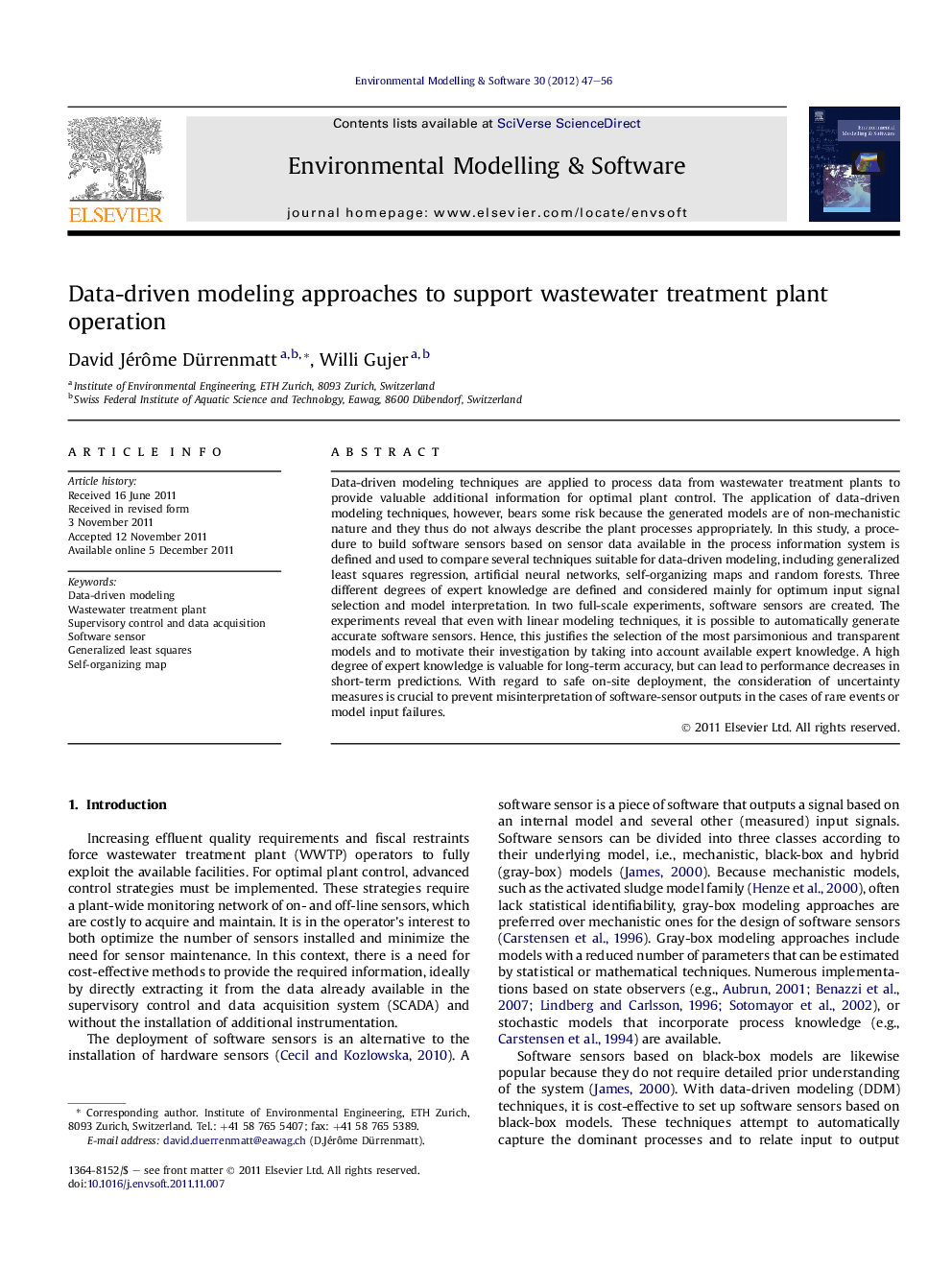| کد مقاله | کد نشریه | سال انتشار | مقاله انگلیسی | نسخه تمام متن |
|---|---|---|---|---|
| 568658 | 1452320 | 2012 | 10 صفحه PDF | دانلود رایگان |

Data-driven modeling techniques are applied to process data from wastewater treatment plants to provide valuable additional information for optimal plant control. The application of data-driven modeling techniques, however, bears some risk because the generated models are of non-mechanistic nature and they thus do not always describe the plant processes appropriately. In this study, a procedure to build software sensors based on sensor data available in the process information system is defined and used to compare several techniques suitable for data-driven modeling, including generalized least squares regression, artificial neural networks, self-organizing maps and random forests. Three different degrees of expert knowledge are defined and considered mainly for optimum input signal selection and model interpretation. In two full-scale experiments, software sensors are created. The experiments reveal that even with linear modeling techniques, it is possible to automatically generate accurate software sensors. Hence, this justifies the selection of the most parsimonious and transparent models and to motivate their investigation by taking into account available expert knowledge. A high degree of expert knowledge is valuable for long-term accuracy, but can lead to performance decreases in short-term predictions. With regard to safe on-site deployment, the consideration of uncertainty measures is crucial to prevent misinterpretation of software-sensor outputs in the cases of rare events or model input failures.
Journal: Environmental Modelling & Software - Volume 30, April 2012, Pages 47–56